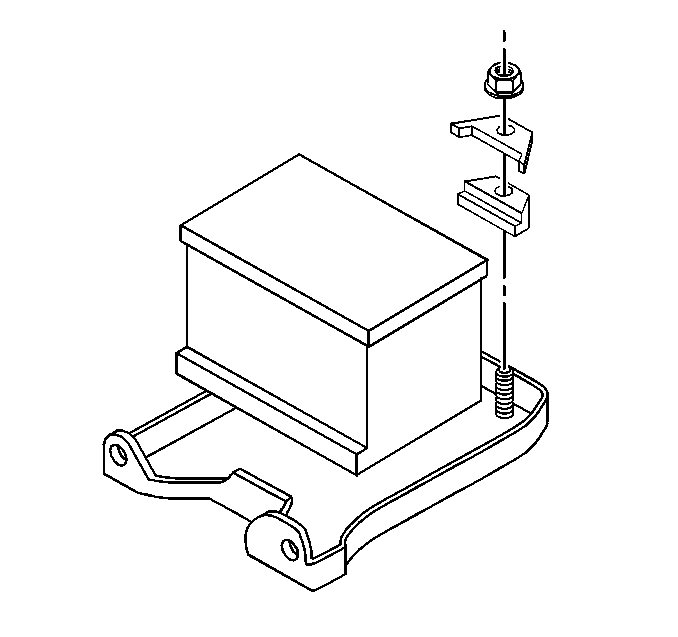Removal Procedure
Caution: Batteries produce explosive gases. Batteries contain corrosive acid.
Batteries supply levels of electrical current high enough to cause burns.
Therefore, in order to reduce the risk of personal injury while working
near a battery, observe the following guidelines:
| • | Always shield your eyes. |
| • | Avoid leaning over the battery whenever possible. |
| • | Do not expose the battery to open flames or sparks. |
| • | Do not allow battery acid to contact the eyes or the skin. |
| - | Flush any contacted areas with water immediately and thoroughly. |

Caution: Before servicing any electrical component, the ignition and start switch must be in the OFF or LOCK position and all electrical loads
must be OFF, unless instructed otherwise in these procedures. If a tool or equipment could easily come in contact with a live exposed electrical terminal, also disconnect the negative battery cable. Failure to follow these precautions may cause personal injury
and/or damage to the vehicle or its components.
- Disconnect
the battery negative cable. Refer to
Battery Negative Cable Disconnection and Connection
.
- Disconnect the battery positive cable.
- Remove the following parts:
- Inspect the following items for physical damage or corrosion,
clean as necessary:
Installation Procedure

Notice: Use the correct fastener in the correct location. Replacement fasteners
must be the correct part number for that application. Fasteners requiring
replacement or fasteners requiring the use of thread locking compound or sealant
are identified in the service procedure. Do not use paints, lubricants, or
corrosion inhibitors on fasteners or fastener joint surfaces unless specified.
These coatings affect fastener torque and joint clamping force and may damage
the fastener. Use the correct tightening sequence and specifications when
installing fasteners in order to avoid damage to parts and systems.
- Install the following
parts:
| 1.1. | The battery onto a cleaned battery tray |
Tighten
Tighten the retainer nut to 17 N·m (13 lb ft).
- Connect the battery positive cable.
- Connect the battery negative cable. Refer to
Battery Negative Cable Disconnection and Connection
.
Tighten
Tighten the battery terminal bolts to 15 N·m (11 lb ft).


